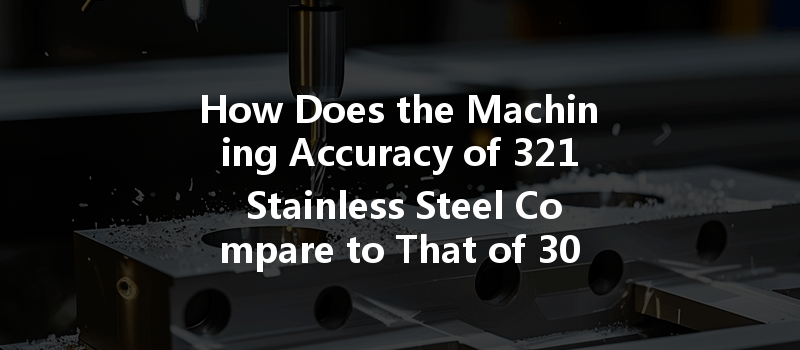Opening:
Did you know that the precision of machining components can significantly influence the efficiency and reliability of a wide range of products, from aerospace to consumer goods? When it comes to stainless steel, two of the most commonly discussed alloys are 321 and 304 stainless steel. Both of these materials exhibit exceptional corrosion resistance and strength, but how do they differ in terms of machining accuracy? This article delves deep into their characteristics, machining processes, and performance, helping manufacturers make informed decisions.
Understanding Stainless Steel Alloys
Stainless steel, an alloy primarily composed of iron, carbon, and chromium, is renowned for its ability to resist rust and corrosion. The addition of other elements, such as nickel and titanium, enhances specific attributes, leading to the development of various grades tailored for particular applications.
304 Stainless Steel: Known as the most versatile stainless steel, 304 contains approximately 18% chromium and 8% nickel. This combination results in excellent formability for applications such as food processing, kitchen appliances, and architectural structures.
321 Stainless Steel: Comprised of similar primary elements but with the addition of titanium (around 5% minimum), which protects against grain boundary corrosion. It is particularly useful in high-temperature applications, such as aircraft exhaust systems, due to its superior mechanical properties at elevated temperatures.
Machining Accuracy: A Closer Look
Machining accuracy refers to the degree to which a machined part conforms to its specified dimensions and tolerances. It is of utmost importance in industries requiring high precision and quality, such as aerospace, medical devices, and automotive industries.
Comparative Analysis of Machining 304 and 321 Stainless Steel
304 stainless steel is generally considered easier to machine compared to its 321 counterpart due to its lower work-hardening rate. This means:
While 321 offers excellent high-temperature stability, its greater strength and inclusion of titanium make it more challenging to machine:

Effective Machining Strategies
Utilizing high-speed steel (HSS) tools or carbide inserts is often recommended for machining 304 stainless steel. These tools can withstand the speeds required for efficient machining without suffering significant wear.
Given the challenges posed by 321 stainless steel, the following strategies can enhance machining accuracy:
Common Issues and Solutions
Though relatively easier to machine, issues such as tool wear, burr formation, and dimensional inaccuracies may still occur. Regular maintenance of tools and machining conditions can greatly reduce these issues.
For 321, challenges include:
Real-World Applications
In application-heavy environments like aerospace and chemical processing, the choice between 321 and 304 stainless steel can greatly impact outcomes depending on their machining properties, environmental conditions, and performance needs.
In closing, the distinction in machining accuracy between 304 and 321 stainless steel is influenced by various factors, including material composition, techniques, and tooling strategies. While 304 stainless steel offers easier machinability, 321’s unique properties provide enhanced performance in high-temperature applications.
Understanding these nuances is essential for manufacturers to optimize processes, ensure product quality, and minimize production costs. As technology continues to evolve, so will the techniques for effectively machining these stainless steel alloys. Exploring these differences is not just important for engineers and machinists but vital for anyone involved in the manufacturing process. By making informed decisions based on this comprehensive analysis, businesses can improve the efficiency and precision of their machining operations, ensuring higher quality outcomes across the board.






